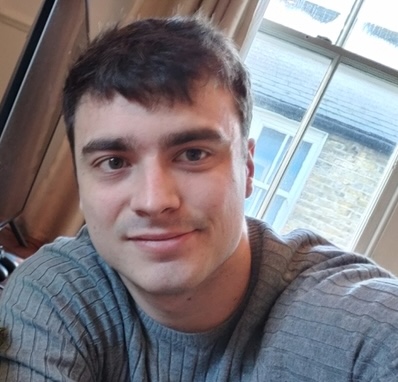Replacing the Collapsed Miami Condo
- Youtube Views 224,221 VIDEO VIEWS
Video narrated by Fred Mills.
YOU COULD be mistaken for assuming these renderings were for just any other condo going up on the Miami coastline.
Glitzy luxury apartments designed for the highest bidder, complete with a swimming pool stretching between them.
They fit in perfectly with every other apartment tower gracing Florida’s famous beaches.
But these buildings are going up on the site of an unspeakable tragedy. One that shook this city to its core and could change the way we build forever.
At 1:30am on the 24th of June 2021 the Champlain South Tower in Miami suffered a partial ‘pancake collapse’. The building was barely 40 years old. The tragedy resulted in 55 of the complex’s 136 flats being entirely destroyed, killing 98 people.
As of the publishing of this story we still don’t fully know why the building collapsed. The National Institute of Standards and Technology, or NIST, is investigating, but piecing together an incident like this takes years and sometimes even decades. It is a process that is extremely important to get right.
Here’s what we know so far.
A pancake collapse is one of the deadliest types of building failures. It is called such for the way the collapsing floors land and stack as they fall, bringing all their weight down on top of the floor below. More and more weight accumulates as the floors fall one after the other.
This is why it’s known as a “progressive failure”, a chain reaction set off usually when a load bearing element is damaged, typically on the lower floors or in the foundations of the building.

Above: The buildings that will replace the collapsed condo. Image courtesy of Zaha Hadid Architects.
These types of failures however are much more common in earthquake zones, not in areas like Florida, where buildings are more susceptible to wind and sea damage than the earth shaking.
Discovering what triggered this type of unusual collapse has been paramount in the ongoing investigation. The findings could set a new standard for building codes.
This has happened before, actually. Tragedy shapes the way we build.
In 1974 a building collapse in Miami changed building codes forever. The roof of a government building caved in, killing seven people and injuring 15 others.
Ever since then buildings in Miami-Dade county have to go through a recertification process every 40 years.
In fact, the Champlain South Tower was going through this very recertification process right before its collapse.
As of right now, 400 large pieces of steel-reinforced concrete along with other pieces of evidence have been moved to facilities so that teams can begin removing and testing concrete cores and obtain samples of the rebar.

Above: The condo before the collapse.
These tests will help the investigators learn whether there were any structural flaws in the building by looking at the density of the materials, how porous they were, and whether there was any corrosion.
NIST released a statement saying that this collapse is "one of the most complex and challenging of its type ever undertaken, with no obvious initiating event for the collapse."
The agency says the investigation will not be completed at the very least until spring of 2024. But this hasn’t stopped many different theories from emerging in the media.
Days after the collapse a 2018 report of the Champlain South Tower emerged. A consultant had found alarming evidence of “major structural damage” to the concrete slab below the pool deck along with cracking in the columns of the parking garage, three years before its collapse.
The report said this concrete and rebar damage was probably caused by persistent water leaks and years of being exposed to corrosive salt air.
But the report also pointed out a problem with the original design of the building, that the entrance and pool deck is laid on a flat structure and isn’t sloped to drain, meaning the water sits there until it evaporates.
Nevertheless the report gave no dire warning of collapse and repairs were put off.
In the aftermath of the collapse, a $1BN settlement for the victims and people who lost family members in the collapse was reached relatively quickly.
The money is coming from 37 different sources, including insurance companies, engineering firms and a luxury condominium whose construction next door was also suspected of contributing to structural damage of the towers.
None of these parties have admitted to any wrongdoing.

Above: The site of the condo after the collapse.
A developer from Dubai also contributed to this settlement. This billionaire purchased the site of the condo for $120M barely a year after the collapse.
A judge allowed the sale of the land so that the money could go towards the victims, but it meant that many had their hopes dashed of the land being turned into a memorial or a park. Instead what will rise on this site will be a new luxury 12-storey condominium.
Designing and constructing this new building is no easy task. The project will have to contend with the emotional weight of the site while fulfilling an economic requirement. This is, after all, one of the most sought after real estate markets in the country.
Notably there will be only 57 residences in these new buildings, a decrease from the previously existing structure which had 136.
While we wait to learn the exact cause of the collapse Florida will now require statewide recertification of condominiums more than three storeys tall under new legislation, that’s a start.
As the investigation comes to an end, this tragedy could change the way we build for generations to come so that nothing like this happens again.
Additional footage and images courtesy of ABC News, Microsoft StreetSide, Miami-Dade Fire Rescue Department, Steve Jurvetson/CC BY 2.0, and Zaha Hadid Architects.
We welcome you sharing our content to inspire others, but please be nice and play by our rules.








